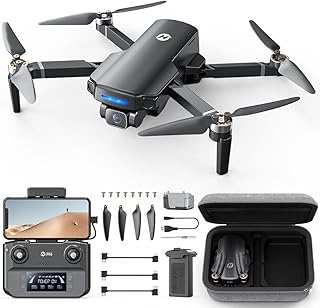Drones: Revolutionizing Emergency Response and Search
Drones are no longer just a hobbyist's toy. They are rapidly becoming indispensable tools in emergency response and search operations, offering a transformative advantage in speed, efficiency, and safety.
How Drones are Transforming Emergency Response:
1. Faster Situational Awareness:
* Rapid Deployment: Drones can be deployed immediately to disaster areas, even in difficult-to-reach locations, providing crucial information within minutes.
* Real-time Data: Equipped with high-resolution cameras and thermal imaging sensors, drones can transmit live video and data to responders, enabling quick assessment of the situation.
* 360�� View: Drones can access areas inaccessible to ground teams, providing a comprehensive view of the damage, injured people, and the overall scene.
2. Enhanced Search & Rescue Operations:
* Wider Coverage: Drones can cover vast areas quickly, searching for survivors in collapsed buildings, dense forests, or large bodies of water.
* Improved Accuracy: Thermal imaging cameras can detect heat signatures from individuals, even in darkness, allowing for more accurate and efficient searches.
* Reduced Risk: Drones can be deployed in dangerous areas, like collapsed buildings or active fire zones, minimizing risk to human responders.
3. Efficient Infrastructure Assessment:
* Damage Evaluation: Drones can capture aerial footage of damaged buildings, bridges, and other infrastructure, enabling swift assessment and prioritization of repairs.
* Power Line Inspection: Drones are used to inspect power lines for damage and potential hazards, ensuring safe and efficient power restoration.
* Emergency Response Planning: Data from drones can be used to plan evacuation routes, optimize resource allocation, and anticipate potential challenges in disaster response.
4. Beyond Search and Rescue:
* Delivery of Supplies: Drones can be used to deliver essential medical supplies, food, and water to remote areas affected by disasters.
* Communication Relay: In areas with communication outages, drones can serve as mobile communication relays, providing vital connectivity for responders.
* Environmental Monitoring: Drones are used to monitor air quality, track wildfires, and assess environmental damage, contributing to preventative measures and disaster mitigation.
Challenges and Future Developments:
* Regulations and Privacy Concerns: Developing clear regulations and addressing privacy concerns is crucial for widespread drone adoption.
* Battery Life and Range: Improving battery life and increasing the range of drones is essential for extended missions.
* Integration with Existing Systems: Developing seamless integration of drone data with existing emergency response systems is key to optimizing their potential.
Conclusion:
Drones are revolutionizing emergency response and search operations, offering unparalleled advantages in speed, efficiency, and safety. By embracing this technology, first responders can save lives, minimize damage, and create a safer future for all. The future holds exciting possibilities for drone technology, with advancements in AI, autonomous flight, and data analysis, poised to further enhance their capabilities and transform emergency response in unprecedented ways.


